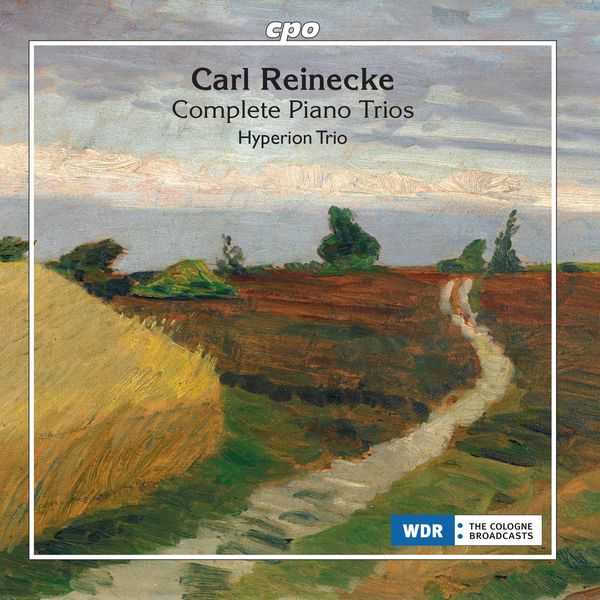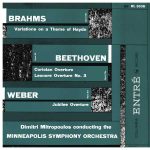

Composer: Carl Reinecke, Ludwig van Beethoven
Performer: Hyperion Trio
Number of Discs: 2
Format: FLAC (tracks)
Label: CPO
Catalogue: 555476-2
Release: 2022
Size: 636 MB
Recovery: +3%
Scan: yes
CD 01
Reinecke: Piano Trio No. 1 in D major, Op. 38
01. I. Lento – Allegro ma non troppo
02. II. Andante
03. III. Scherzo. Vivace ma non troppo
04. IV. Finale. Allegro brilliante
Reinecke: Serenade, Op. 126 No. 1
05. I. Adagio – Molto moderato
06. II. Intermezzo. Allegretto
07. III. Fandango. Moderato molto
08. IV. Finale. Allegro con brio
Reinecke: Serenade, Op. 126 No. 2
09. I. Marsch. Moderato
10. II. Canon. Andante sostenuto
11. III. Humoreske. Allegro
12. IV. Andante und Variationen. Andantino con moto
CD 02
Reinecke: Piano Trio No. 2, Op. 230
01. I. Allegro
02. II. Andante sostenuto
03. III. Scherzo. Vivace ma non troppo
04. IV. Finale. Lento – Allegro appassionata
Beethoven: Triple Concerto for Piano, Violin, and Cello in C major, Op. 56
Arr. C. Reinecke for Piano, Violin & Violoncello
05. I. Allegro
06. II. Largo
07. III. Rondo alla polacca
Carl Reinecke’s complete oeuvre for piano trio. The Hyperion Trio, founded in 1999, has earned an outstanding international reputation over the past two decades, during which it has performed more than 250 works, including a number of world premieres, in its concert programs and independently designed concert cycles – always with the same three original members!
Here the trio turns to works for piano trio by Carl Reinecke. Although closeness to Schumann can clearly be heard in the early Piano Trio, Op. 38 of 1853, it is in every way a thoroughly independent composition both melodically and harmonically and was an important milestone for the succeeding generation of composers. In his two Serenades, Op. 126, composed twenty years after the first Piano Trio, great ambition is in evidence, despite the light tone of these works: the texture is more relaxed than it was in the first piano trio, and the thematic material – or, more precisely, the motivic material – is concise and forms the core for rich elaboration.
The Piano Trio No. 2, Op. 230, composed twenty years after the two Serenades and no fewer than forty-two years after the first Piano Trio, places considerable demands on the interpreter, not only in the composition’s structural and motivic aspects but also purely technically in the field of precision ensemble playing. The beautiful harmonic features of the work are enormous, and the tight contrapuntal structure reveals a composer most highly schooled in convention as well as powers of musical invention and ambition beyond the reach of a good many of his younger contemporaries. The original conclusion is formed by Reinecke’s piano trio version of Beethoven’s Triple Concerto, Op. 56 : while his arrangement preserves the orchestral breadth, it simultaneously brings out the chamber components of the original work.



